Suunto nos sorprendió a comienzos de año con la presentación de este nuevo modelo de la gama, el Ambit3 Vertical. Totalmente por sorpresa y a través de nota de prensa, sin grandes eventos ni fanfarrias. En definitiva, de la manera en la que Suunto nos tienen acostumbrados.
Es posible que estuviéramos esperando ya el Ambit4, o novedades mucho más importantes. Pero este nuevo modelo supone dar un paso más en la gama Ambit3, con nuevas prestaciones que lo acercan y a la vez lo diferencian de su principal competidor, el Garmin Fenix 3.
¿No tienes claro cuáles son las diferencias entre los diferentes modelos de la gama? No te preocupes, porque dentro de sólo cinco minutos lo sabrás todo sobre el Suunto Ambit3 Vertical. Y al igual que hiciera en la prueba del Suunto Ambit3 Run, esta no es una prueba completa sino que me centraré en las novedades que presenta con respecto a sus hermanos de gama. Así que si eres totalmente nuevo a la gama de Suunto, en la prueba del Ambit3 Sport encontrarás mucha más información de todo lo que ofrecen estos relojes.
En esta ocasión hay que agradecer a Suunto la cesión del reloj para realizar las pruebas que incluso han hecho posible antes de la fecha oficial de venta al público, lo que ha permitido poder facilitarte toda la información lo antes posible, con una versión final tanto en hardware como en software. Recuerda, en cada prueba reflejo mi opinión sobre el producto con un uso normal como atleta, exactamente igual que el que tú puedas hacer del dispositivo. No tengo ningún tipo de presión por parte de fabricantes para reflejar una opinión positiva (o no señalar los aspectos negativos).
Y esto es así porque esta página no depende de la publicidad que los fabricantes puedan hacer aquí (NO ACEPTO PUBLICIDAD DE LOS PRODUCTOS QUE ANALIZO), lo que garantiza esa independencia absoluta. ¿Entonces cómo se mantiene la página web? Gracias a todos vosotros, y es que si compráis a través de los enlaces que facilito recibiré una pequeña comisión por cada compra, tanto del reloj como de cualquier accesorio que añadáis. Así que de vosotros depende que pueda continuar realizando nuevas pruebas de dispositivos.
No me enrollo más. ¿Quieres saber todo lo que ofrece el nuevo Suunto Ambit3 Vertical?. Pues ponte cómodo y comienza a leer, cerveza y aceitunas son opcionales.
Navegar a secciones específicas
Desempaquetado
Antes de poder hablar en detalle del Suunto Ambit3 Vertical, primero hay que sacarlo de la caja. Primero hay que saber lo que viene en la caja y para qué sirve cada botón.
En el caso del modelo que dispongo para la prueba, se trata de la versión en color lima. Si te resulta demasiado llamativo no te preocupes, porque también lo podrás comprar en otros clásicos colores de Suunto: blanco, negro o azul.
En la caja está perfectamente representado el color, y además se destaca la principal novedad del modelo Vertical, que es el perfil de altimetría de tu ruta (yo le llamo gráfica de sufrimiento). Más adelante te hablaré de ella con todo detalle.
En la parte trasera encontrarás todos los detalles principales, como la sincronización automática con Strava y Training Peaks o el contenido de la caja, incluyendo el color del reloj y la cinta del sensor de pulso.
Pero vamos a abrir la caja para descubrir la joya. Esta vez y a diferencia del resto de la gama Ambit3, sin la protuberancia de la antena GPS en la zona de la correa, al igual que en el reciente Suunto Traverse.
En el caso de la versión HR, esto es lo que encontrarás además del reloj. De izquierda a derecha verás el cable de sincronización y carga, la cinta del sensor de pulso, el sensor, un escueto manual de instrucciones y una pegatina de Suunto. ¡Ah, también hay un reloj!
La disposición de botones es la misma que en el resto de la gama. Dos en el lado izquierdo y tres en el derecho.
Saber manejar estos botones con maestría es un grado, pues según presiones el botón podrás hacer diferentes cosas.
- El botón superior izquierdo te permite salir de los diferentes menús o volver al anterior, así como marcar vueltas mientras estás corriendo. A su vez, si lo mantienes presionado en cualquier lugar te permitirá salir a la pantalla principal de forma directa.
- El segundo botón del lado izquierdo altera las vistas de las diferentes pantallas. La línea inferior de los campos de datos, o las diferentes gráficas y mapas de navegación. Y al mantenerlo presionado podrás invertir la pantalla (texto blanco sobre fondo negro y viceversa).
- En el lado derecho hay tres botones. El superior es desde el que controlamos el inicio o la pausa de la actividad, y si lo dejas presionado mientras corres la actividad se detendrá de forma automática. Junto con el botón inferior derecho también servirá para desplazarte por los menús.
- El botón central te permite cambiar de pantallas y, al mantenerlo presionado, acceder al menú. También será el que uses para confirmar diferentes opciones.
- Por último el botón inferior, además de permitir desplazarte en las opciones de menú hacia abajo también servirá para activar la iluminación y, si lo dejas pulsado, para bloquear todos los botones.
Tras este máster en uso de botones de Suunto, podemos mirarle el culo al reloj. En la parte superior verás unos puntitos. Ahí es donde se sitúa el sensor de presión barométrica, que es lo que te dará la información de altitud. Y debajo todos los detalles importantes del reloj, como que es resistente al agua hasta 100 metros, la compatibilidad con Bluetooth, o algo de lo que Suunto presume mucho, el estar fabricado en Finlandia.
La cinta pectoral es del mismo material y con las mismas características de los otros modelos de la gama. La diferencia es que ahora comparte color con el reloj. Así que si ya te daba «palo» ponerte el sensor en la piscina, ni te cuento ahora que es de color amarillo/verde lima…
Y hablando de sensores, el Suunto Smart Sensor sigue siendo uno de los mejores. De tamaño muy reducido (bastante más que los de Polar o Garmin, incluso más pequeño que el nuevo HRM-Run integrado en cinta), dispone también de memoria para grabar los datos de frecuencia cardíaca durante la natación.
Algo que no ha cambiado y que agradezco sobre manera, es la pinza de sincronización y carga. A pesar de haber cambiado el diseño de la caja del reloj, el sistema de anclaje es el mismo.
Este diseño es perfecto, porque además de ser fácil de colocar cuando sincronizas el reloj, también te permite cargar el reloj mientras lo estás usando. Por ejemplo durante una ultra maratón donde necesites más horas de autonomía de las que el reloj es capaz de darte, puedes conectarlo de forma rápida a una batería portátil y continuar usando el reloj mientras sigues con tu prueba.
Las novedades del Ambit3 Vertical
Siendo un Ambit3 está claro cuáles son sus características principales. Pero… ¿en qué le hace especial la denominación Vertical?. Principalmente en nuevas prestaciones de software.
Pero no sólo es el software lo que cambia, también hay novedades a nivel de hardware. Y por eso me gusta decir que el Ambit3 Vertical es más bien un Ambit3,5, porque da un paso más en el diseño, que ahora comparte con el Traverse. Suunto ha eliminado la clásica protuberancia de la parte inferior del reloj de todos los Ambit, que es donde se aloja la antena.
Ahora la antena se ubica en el propio bisel del reloj, ofreciendo un diseño más limpio y haciendo el reloj más cómodo en la muñeca. ¿Afecta a la excelente calidad de recepción de GPS a la que Suunto nos tiene acostumbrados? Más adelante lo veremos, aunque también hay que destacar que ahora es compatible con satélites GLONASS, algo que el chipset del resto de la gama Ambit3 no soporta.
El diseño de la caja no es lo único que recibe del Traverse. También tiene alertas por vibración, que por fin se encuentra en un reloj de la gama Ambit. Algo incomprensible que no estuviera presente hasta ahora, pero más vale tarde que nunca. Podríamos pedir algo más de potencia en la vibración o que en cada aviso la vibración dure algo más de tiempo, pero es un inicio.
Con respecto a la gama, el Ambit3 Vertical se sitúa entre el Sport y el Peak. Comparado con el Sport mejora en que tiene altímetro barométrico, pero no llega a ofrecer el nivel de autonomía del Peak.
En definitiva, y por aclararlo de forma rápida, estas son las principales diferencias físicas del Vertical con respecto al resto de la gama:
- Nuevo diseño de la caja, eliminando la protuberancia de la antena, que ahora se coloca en el bisel.
- Soporte para satélites GLONASS.
- Alertas por vibración.
- Altímetro barométrico, igual que en el Ambit3 Peak (el Ambit3 Sport no lo tiene).
- Misma autonomía que el Ambit3 Sport, que es menor que la del Ambit3 Peak.
Todo esto con respecto a los cambios físicos. No son muy grandes, de hecho la pantalla es la misma que en el resto de la gama, así como tamaño general y disposición de botones. Simplemente Suunto ha ido tomando cosas de diferentes modelos para combinarlos en el Vertical, ofreciendo un diseño más actual.
Donde más diferencias vas a notar es a nivel de software, ya que Suunto ha diseñado una serie de opciones basándose en el altímetro barométrico.
En primer lugar la distancia 3D, que por defecto está activado. El Ambit3 Vertical tendrá en cuenta la ganancia o pérdida de altura a la hora de medir la distancia, dando una precisión mayor cuando hay muchas pendientes. En estos casos, lógicamente, la distancia 3D es mayor, ya que para desplazarte de A a B (en el plano 2D) recorres más distancia al hacerlo subiendo y bajando que si lo hicieses en línea recta. Al leerlo te habrá salido una mueca, pero cuando lo veas en una imagen lo entenderás perfectamente.
Suunto ha añadido un nuevo widget de historial de ascenso. Dicho historial irá acumulando los metros de ascenso durante la actividad (no durante el día a día) y lo representa en la nueva pantalla, a la que se accede desde el modo reposo del reloj (cuando está mostrando la hora).
El widget tiene distintas opciones para mostrar la información. Por defecto aparece el historial de los últimos siete días, pero presionando el botón de «View» podrás ver otras pantallas, como ascenso de los últimos 30 días (a partir de la fecha que se indica en la parte superior), el resumen de todo el año desglosado mes a mes o el total de ascenso acumulado mientras has usado el reloj (desde el primer día), en horas y metros.
Por último, el cambio más importante (y útil) es que mientras estás realizando una ruta de navegación (que previamente hayas sincronizado con el reloj), tendrás una pantalla adicional en dicha sección en la que podrás ver el perfil de la ruta a la que te enfrentas, acompañado de una línea que representará el sufrimiento ya pasado y el calvario que te queda por delante. Junto a la gráfica verás en la parte superior el ascenso ya acumulado y debajo de ella los metros positivos que te quedan por delante.
Así que por ponerlo de nuevo de forma rápida, con sus puntitos y tal, estas son las nuevas prestaciones en cuanto a software:
- Distancia 3D
- Widget de historial de ascenso (semanal, mensual, anual y total)
- Mostrar la elevación durante la ruta, tanto la hecha como lo que está por llegar
Todo lo demás de la serie Ambit3
Las diferencias del Ambit3 Vertical con el resto de la gama Ambit3 son las que he remarcado arriba. Las demás funciones son las mismas que tanto amas de los otros modelos, por ejemplo del Suunto Amibt3 Sport, prueba que realicé en su día y que podrás encontrar con todos los detalles aquí.
Pero por hacer un repaso rápido y refrescar todas las funciones sin necesidad de que te la vuelvas a leer completa, te haré un resumen rápido de todas las funciones.
El Ambit3 Vertical se sitúa entre los modelos Sport y Peak. Al igual que esos dos es un reloj multideporte que podrás usar para correr, nadar o hacer ciclismo; tanto de forma separada como en actividades multideporte (es decir, participar en pruebas como duatlón, triatlón y grabar en una sola actividad un entrenamiento combinado).
El reloj se puede emparejar con sensores Bluetooth de todo tipo. Podómetros, sensores de velocidad y cadencia de ciclismo, medidores de potencia tanto de ciclismo como de carrera (Stryd), etc.
En natación también podrás hacer seguimiento de pulso durante tus entrenamientos, no durante la actividad en si, sino al sincronizar el entrenamiento, pues el sensor de pulso de Suunto dispone de una memoria donde almacena los datos de frecuencia cardíaca que después se sincronizarán con el reloj para añadirlos a la actividad antes de guardarla de forma definitiva.
Por supuesto dispone de la misma navegación de rutas que puedes encontrar en el resto de modelos (Ambit3 Run incluido), una de las señas de identidad de toda la gama. Lo único que en este caso se encuentra mejorado con las prestaciones específicas de la versión Vertical, con la elevación durante la ruta o el widget de ascenso.
Las novedades del Ambit3 Vertical, a prueba
Para conocer bien qué aportan las novedades del Ambit3 Vertical, lo más apropiado es probarlo en su salsa. ¿Y dónde se encuentra mejor? Subiendo cuestas. Por tanto, aunque he realizado multitud de entrenamientos con el Ambit3 Vertical los que quiero destacar son precisamente aquellos donde he estado subiendo pendientes. Porque para entrenar en terreno llano no necesitas este reloj, su altímetro barométrico y su pantalla de pendiente restante.
Y qué mejor banco de pruebas que una competición de trail running. Y así fue, me busqué una prueba cercana de esta modalidad y me inscribí en ella.
Lo primero que debes tener en cuenta para poder tener tu gráfica de altimetría es que debes crear una ruta de navegación. Y no sólo crearla, sino también importarla. Normalmente todos los organizadores de carreras de trail ponen a disposición de los corredores los archivos GPX de la prueba para que puedas mirar altimetrías y poder cargarlo en su dispositivo GPS y no perderte en el recorrido. En ese sentido Suunto lo pone fácil, porque a través de la web Movescount no sólo puedes crear tu ruta a partir de los mapas, sino que también puedes importar la ruta.
Una vez importada aparecerá en el plano y podrás darle nombre y seleccionar en qué reloj quieres sincronizarla, como siempre en los dispositivos de Suunto. Aquí nada cambia. Lo que sí es importante, al menos para crear la ruta, es seleccionar los mapas de Mapbox. Porque al menos para crear las rutas hay un detalle importante, como verás en estas imágenes.
Y no es otra que en la segunda, debajo el mapa te aparece en perfil de altimetría. En el caso de Google Suunto no ofrece esa información.
Aunque he leído problemas de algunos usuarios en los que al realizar la ruta desde el mapa de Google luego el perfil no aparecía de forma correcta en el reloj, yo nunca lo he sufrido. Supongo que dependerá de la zona del mapa a usar. Pero no está de más conocer los datos de altitud mientras vas generando la ruta. Yo he probado a grabar la misma ruta con el mapa de Google y el mapa de Mapbox y en ambos casos la gráfica de altimetría aparecía de forma correcta.
Una vez importado el archivo o creado la ruta, se vería tal que así.
Así que a la hora de competir, lo único que debes hacer es iniciar la ruta de navegación. Aunque no necesites navegar porque la ruta que debes seguir está bastante clara. El motivo no es otro que la pantalla con el perfil de altitud es una de las tres pantallas de navegación. Es decir, primero verás la pantalla de navegación así
Si presionas una vez el botón «View» tendrás la ruta ampliada, y si presionas una segunda vez entonces verás la pantalla más interesante, que no es otra que la del perfil de altimetría. Esta pantalla se divide en tres campos diferenciados. En la parte superior aparecerá la cantidad de metros que ya has ascendido (251m verticales en este caso), mientras que en la parte inferior los metros que quedan por ascender en lo que queda de ruta (sólo 36 metros). La gráfica representa en qué punto de la ruta te encuentras, ya que a medida que vas avanzando en la ruta se va completando en color negro. Y como ves, no sólo lo usarás para correr, también tiene mucho sentido a la hora de usar la bici.
Pero donde tiene toda lógica es a la hora de realizar competiciones de trail. Puedo decir que en las más de dos horas de carrera no necesité cambiar de pantalla en ningún momento, pues en el perfil de altimetría tenía todo lo necesario. Ni siquiera eché un vistazo a los otros relojes que llevaba (para comprobación de datos GPS que verás más adelante). De verdad, con esa pantalla tenía más que suficiente para tener todas las referencias necesarias. No sólo porque podía ver de forma fácil lo que había sufrido (metros ya ascendidos) y lo que me faltaba por sufrir (metros verticales restantes), sino porque gracias al perfil de altimetría puedes ver perfectamente si lo que queda de ruta va hacia arriba, hacia abajo y en qué grado de ascenso o descenso.
Como ya has visto, a medida que la competición avanza tu punto de referencia en el perfil de altimetría va avanzando, y los datos de metros ascendidos y metros restantes se van actualizando.
Por supuesto en cualquier momento puedes acceder a cualquier página de datos de las que hayas configurado en tu perfil de carrera o carrera de montaña. Para ello no tienes más que pulsar el botón «Next» para ir cambiando entre las diferentes pantallas, aquí se comporta exactamente igual que el Ambit3 Sport.
Cuando hayas completado el entrenamiento o carrera podrás ver en el resumen de la actividad la misma gráfica, con el total de metros ascendidos y descendidos.
Y hablando de datos obtenidos tras el entrenamiento, el Ambit3 Vertical cuenta con termómetro interno, algo que no aparece en la hoja de características. En la pantalla del reloj no tendrás ningún dato de temperatura, pero sí se escribe en el archivo de la actividad y se puede consultar tras sincronización.
Los datos de temperatura obtenidos pueden ser o no ser válidos. Al correr con el reloj en la muñeca la medición de temperatura se verá afectada por el propio calor corporal. Pero si no llevas el reloj en la muñeca (por ejemplo, montado en el manillar de una bicicleta), entonces sí podrás tener información correcta de la temperatura.
También dispongo de los datos de potencia media y máxima de la sesión de entrenamiento o carrera, ya que el sensor de pulso que estaba usando era el Stryd.
Suunto ha sido el primer (y de momento único) fabricante en incorporar la función de medición de potencia de Stryd de forma nativa en el reloj. Y además ellos mismos se encargaron de resaltarlo en la nota de prensa de presentación del Ambit3 Vertical.
No sólo se trata de poder seleccionar campos de potencia mientras corres (instantánea, así como medias de los últimos 3 segundos, 10 segundos, etc), también se sincronizarán con Movescount al terminar la actividad, y podrás examinar tu rendimiento no sólo en el panel de Stryd (con el que hay posibilidad de sincronización automática desde Movescount), sino también en la web de Suunto.
Es decir, no sólo Suunto se ha preocupado de hacer que el emparejamiento del sensor sea súper sencillo (simplemente hay que añadirlo como sensor de pulso, sin preocuparse de la parte de medición de potencia), sino que además ofrece integración completa en su plataforma. Un ejemplo de comportamiento por el que hay que felicitar a Suunto.
Y sí, aún os debo el análisis completo de Stryd…
Comparativa de GPS
A la hora de analizar el nuevo Ambit3 Vertical, un punto que es crucial es ver cuál es el comportamiento que ofrece en cuanto a sensibilidad GPS. Y es que Suunto ha cambiado su clásico diseño con la antena situada por debajo de la caja del reloj y la ha integrado en el propio bisel, al igual que otros fabricantes ya han hecho en los últimos años. Con Suunto casi siempre he obtenido unos tracks de GPS de una calidad muy alta (evidentemente, no perfecto), siempre por encima de sus rivales.
Con esa premisa la comparativa estaba clara: realizar las mismas actividades con el Suunto Ambit3 Sport, con su antena clásica en la zona de la correa. En general he visto buenos resultados en los tracks, sobre todo en zonas con buena cobertura. Y visto de forma global el resultado es bastante bueno.
De igual forma cuanto a distancia total, los tres relojes terminan en cifras muy similares (no le hagas caso a las distancias que aparecen en la captura superior). Por ejemplo en esa ruta la distancia medida por los tres fue la siguiente:
- Suunto Ambit3 Vertical: 15,61 km
- Suunto Ambit3 Sport: 15,38 km
- Garmin Fenix 3: 15,55 km
En zonas boscosas y difíciles es cuando se empiezan a notar las diferencias. Llegando a este giro es el Ambit3 Sport el que mejor se comporta. El Vertical recorta mucho el giro, mientras que el Fenix 3 se desvía antes de hacerlo y después se va un poco largo. No obstante, una vez que se alcanza cielo abierto los tres relojes se vuelven a alinear perfectamente en el mismo camino.
Un poco más adelante, tras pasar por debajo del puente de la autovía es de nuevo el Sport el que mejor se ubica. Tanto el Fenix 3 como el Ambit3 Vertical se van fuera de la trazada por unos cuantos metros.
Aquí coronamos el pico por una zona muy boscosa y empinada, siendo necesario subir con cuerdas. Por tanto, de movimiento muy lento. La parte superior del track es esa zona más difícil.
Amplío esa parte del track. Como ves el track del Ambit3 Vertical es algo peor que el ofrecido por el Ambit3 Sport, pero infinitamente más acertado que el grabado por el Fenix 3.
Es en zonas complicadas en el único sitio donde se puede decir algo negativo de la señal que recibe el Ambit3 Vertical. En otras situaciones no hay mucho que destacar. Incluso en este ejemplo es el que mejor ruta graba de los tres dispositivos usados en ese momento. Se ve claro en el trazado de la rotonda (y llegando a ella), cómo el Vertical va perfectamente por el punto de la carretera correcto mientras que tanto el Edge 520 como el Fenix 3 van un par de metros desplazados del trazado.
Lo que debes tener claro es que no hay ningún modelo que sea netamente superior a otro en cuanto a registro de tracks de GPS. Esta imagen es un claro ejemplo de ello. Puntos en los que los tres relojes calcan el track junto con otros lugares en los que alguno de los tres se desvía de la ruta, pero no hay un claro vencedor.
En definitiva, hay dos preguntas que se pueden responder de forma rápida y fácil.
¿Iguala el Ambit3 Vertical la precisión del resto de la gama Ambit?
A día de hoy, no. Aún hay terreno de mejora, ya que aunque el Ambit3 Vertical es compatible con satélites GLONASS esta funcionalidad aún no ha sido activada. El Suunto Traverse se lanzó de la misma manera al mercado y tras actualización y activación de esta función, la precisión de localización ha mejorado ligeramente.
¿Supone algún problema a la hora de entrenar o competir?
En absoluto. Yo no he encontrado ningún problema en estas semanas de uso. Es un reloj perfectamente válido para correr tanto en zonas de buena cobertura como terrenos más complicados, donde la precisión se ve más afectada que en el caso del resto de la gama Ambit3, pero aún así mantiene un nivel muy alto. Es cierto que no alcanza la precisión del Ambit3 Sport, pero a mi no me supone ningún problema en ese sentido.
Autonomía
Suunto promete la misma duración que el Ambit3 Sport. Es decir, hasta 10 horas con grabación de datos de un segundo. En la prueba que realicé en su día obtuve 9:44, que tras actualización de software pasó a 10:45, un resultado sobresaliente.
Pero una cosa es lo que diga la hoja de características y otra muy distinta la realidad, motivo por el cual siempre me gusta realizar una prueba completa, para poder validar los datos facilitados por cada marca.
El procedimiento es sencillo. Carga de batería al 100% y sacarlo a la calle a grabar una actividad, hasta que se detenga por falta de batería. Que en el caso de Suunto no es cuando el reloj se apaga, sino que permanece en un modo «stand by» en el que continúa mostrando la hora. Un detalle por parte de Suunto.
En este caso el Ambit3 Vertical no ha alcanzado las expectativas, quedándose algo por debajo de 9 horas de duración total hasta que el reloj finaliza la actividad de forma automática (y guardándola, por lo que en caso de ir bajo de batería no perderías el entrenamiento). Aunque también hay que tener en cuenta que la prueba se realizó por la noche y aunque la temperatura no era excesivamente baja, sí supone una merma en la duración.
No obstante, creo que aún hay margen de mejora. De hecho el resto de la gama Ambit3 mejoró con las actualizaciones, por lo que no sería de extrañar que en el caso del Ambit3 Vertical también se pueda mejorar a través de actualización. De momento cuenta con esta cifra y no pienses en lo que Suunto pueda (o no pueda) hacer en un futuro, y si las condiciones climatológicas son más positivas probablemente ronde las nueve horas y media o pueda acercarse a las 10 horas prometidas.
Ese es el máximo alcanzado con grabación de 1 segundo. Pero para pruebas de trail más largas puedes configurar el registro cada 5 segundos, consiguiendo así hasta 15 horas de autonomía con una tasa de grabación bastante aceptable, sobre todo si el terreno es complicado y los movimientos lentos.
Mi opinión
El nuevo Suunto Ambit3 Vertical no representa un salto importante dentro de la gama, pero sí da pequeños pasos en la dirección adecuada. El renovado diseño perjudica ligeramente la recepción GPS, que continúa siendo muy satisfactorio, pero aún falta por ver su comportamiento una vez que se active el uso de satélites GPS. Y por fin tenemos vibración en un reloj de Suunto, algo por lo que han sido bastante criticados. Al menos hasta ahora.
Las nuevas posibilidades que ofrece su software serán muy bien recibidas por parte de muchos usuarios, sobre todo los corredores de trail. En mi opinión, en ese tipo de carreras, la nueva pantalla con el perfil de altimetría es todo lo que puedes necesitar en una prueba de este tipo. De un sólo vistazo tienes total referencia de cuánto esfuerzo te queda por delante, tanto en distancia relativa como en perfil de la ruta. Y es que de nada te sirve saber que te quedan 5 kilómetros por delante, porque a diferencia de una carrera por asfalto, esos 5 kilómetros pueden llevarte 15 minutos o más de una hora.
Creo que a día de hoy, el Ambit3 Vertical es todo lo que un corredor de trail puede buscar. Contiene todo lo que necesita y todas las novedades incluidas están pensadas para ese uso. No tiene un monitor de actividad, pero el nuevo widget de metros ascendidos acumulados es un gran motivador para el tipo de usuario al que se enfoca, mucho más allá que saber el número de pasos recorridos en un día.
En cuanto al resto del reloj, es lo mismo que ya conocíamos. Con todos sus puntos positivos: fiabilidad en todo momento, sencillez de uso, buena plataforma online y una fantástica calidad de materiales y construcción.
Pero debes tener en cuenta que aquellos fallos que aquejaban al resto de la gama Ambit3 continúan con el Vertical. Principalmente una aplicación muy mejorable en Android, un sistema de notificaciones que no termina de convencer o la obligación de preparar sesiones de entrenamiento exclusivamente desde el móvil. Eso si, todos ellos afectan a funciones secundarias del reloj, no a su funcionalidad principal.
¿Te ha gustado la prueba?
Espero que esta review sea de tu agrado. Son muchas las horas necesarias para hacer cada una de ellas. Si te gusta el trabajo que hago recuerda que tu apoyo es fundamental. Si te animas con la compra del dispositivo, puedes hacerlo a través de estos enlaces que encuentras en la parte inferior del artículo, sin ningún coste para ti. De esta manera tú ahorras y a mi me retornan una pequeña comisión que ayudará a la compra de nuevos dispositivos para realizar las siguientes pruebas.
No olvides compartir la prueba en tus redes sociales y con amigos, para que ellos también puedan estar informados. Y no dudes en comentar y suscribirte a los comentarios, muchas veces encontrarás respuesta a preguntas que no se han tratado en el texto de la prueba. Puedes usar los comentarios de la prueba como un foro y compartir no sólo tus dudas, sino también tus opiniones del reloj con el resto de lectores.
Comprar Suunto Ambit3 Vertical
El Ambit3 Vertical está disponible en cuatro colores diferentes: Blanco, negro, azul y lima. Y puedes optar entre comprar solamente el reloj o hacerlo junto con el Suunto Smart Sensor. A continuación te facilito enlaces con muy buenas ofertas. Comprando a través de ellos ayudarás a mantener la página web y parte de mi trabajo.
Estos son los precios que puedes encontrar en Amazon en toda su red europea, para las versiones sin sensor de pulso.
https://www.amazon.es/dp/B01AUIFB0A&tag=c1mes-21
https://www.amazon.es/dp/B01AUIFAVK&tag=c1mes-21
https://www.amazon.es/dp/B01AUIFB7S&tag=c1mes-21
https://www.amazon.es/dp/B01AUIFAWO&tag=c1mes-21
Y a continuación, los que incluyen el Suunto Smart Sensor
https://www.amazon.es/dp/B01AGJV7XI&tag=c1mes-21
https://www.amazon.es/dp/B06XH35TBL&tag=c1mes-21
https://www.amazon.es/dp/B01AUIFB28&tag=c1mes-21
https://www.amazon.es/dp/B01AUIF7XG&tag=c1mes-21

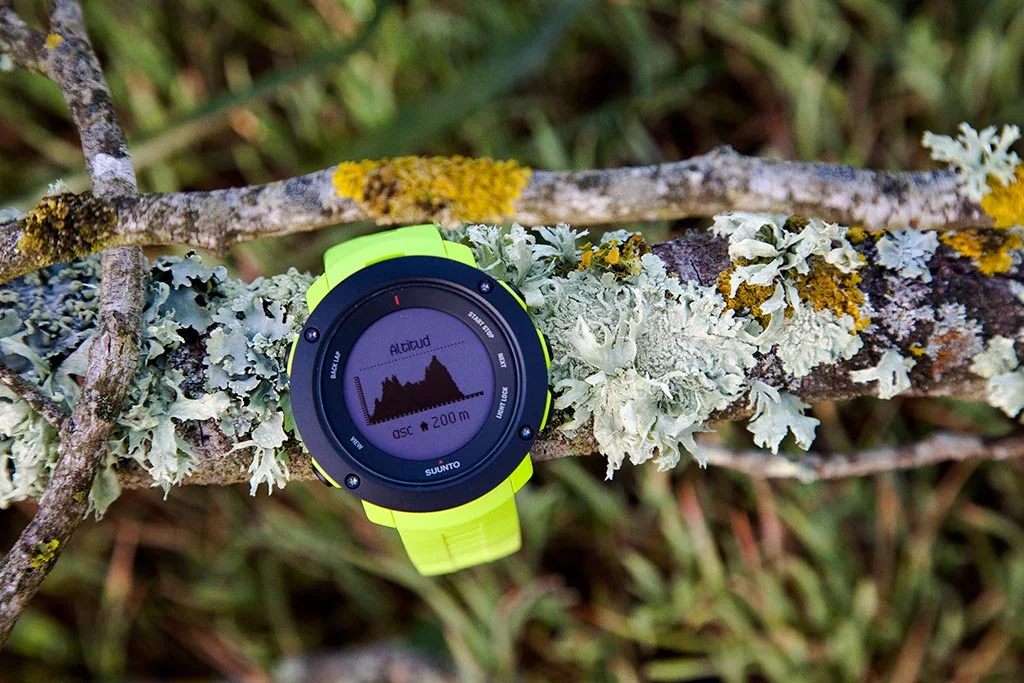
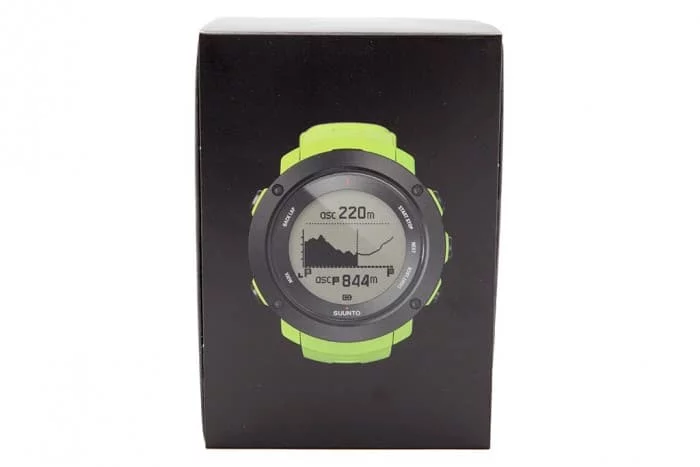
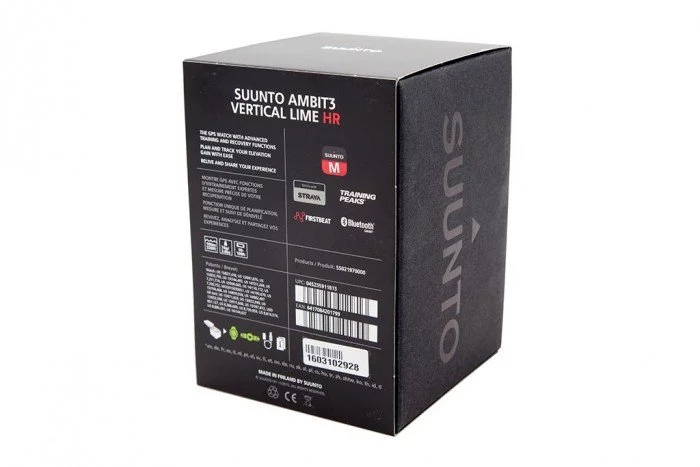
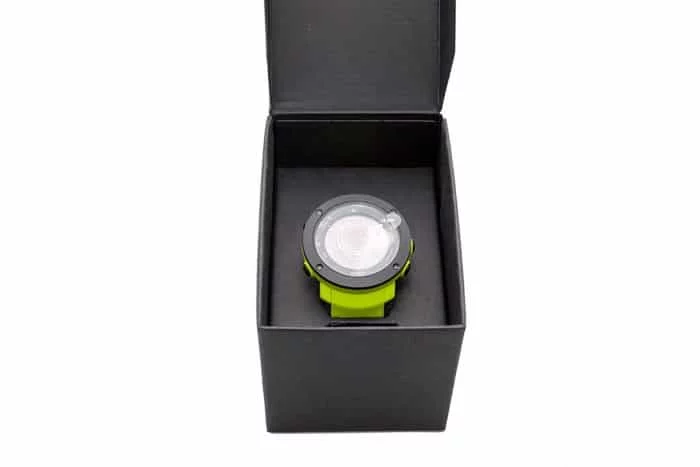
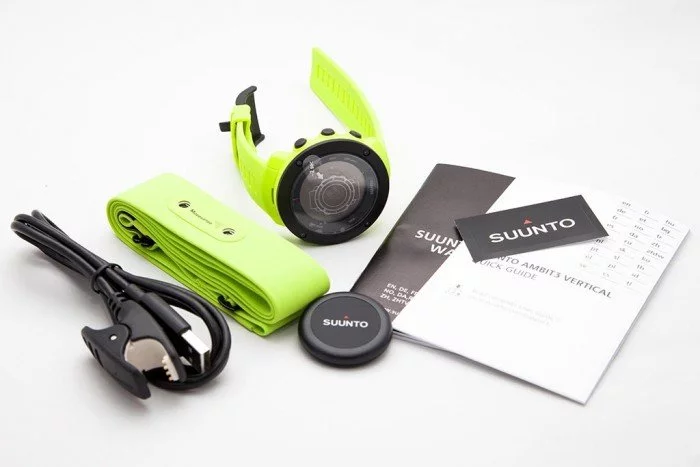
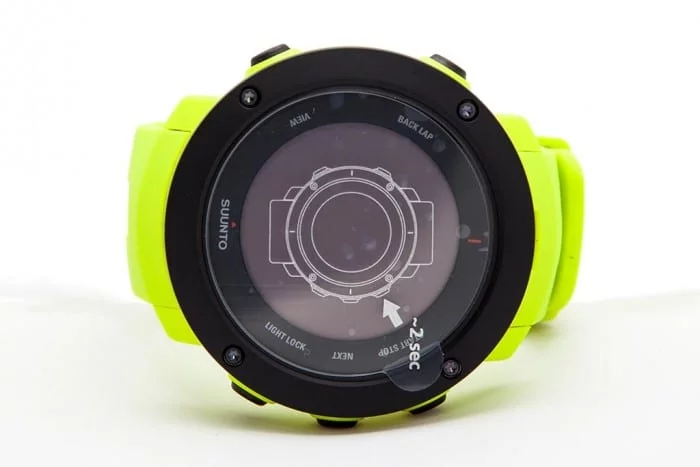
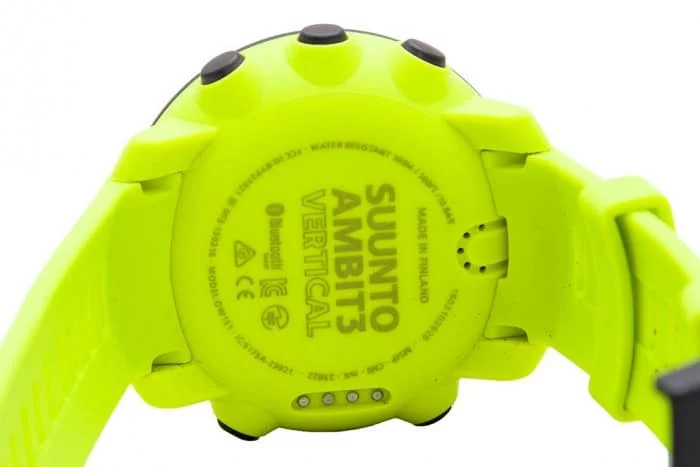

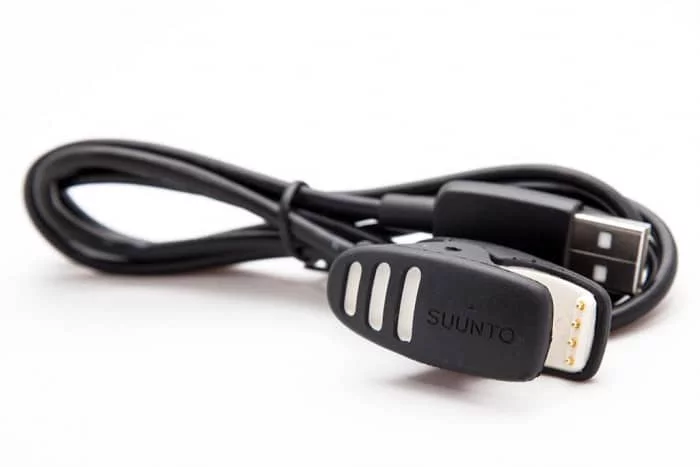
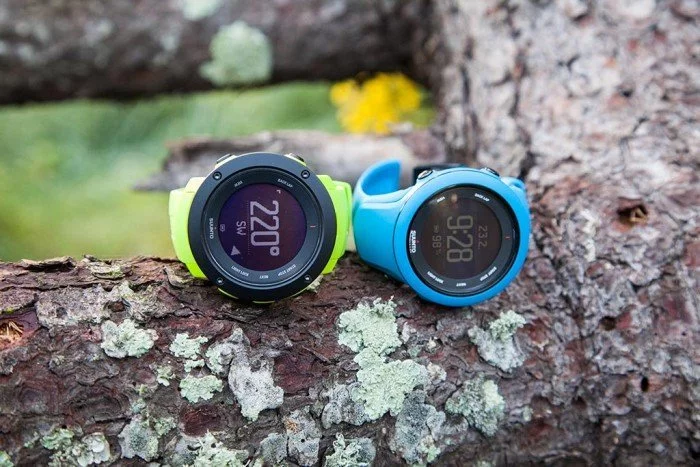

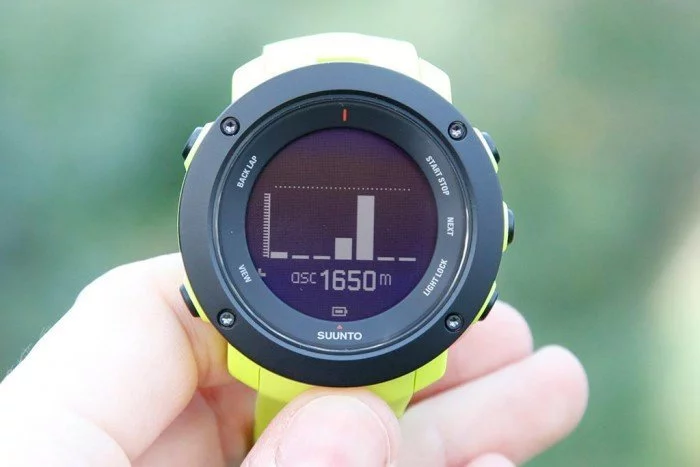
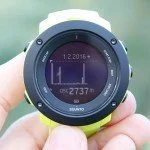
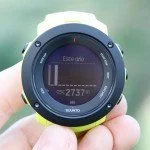
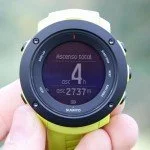
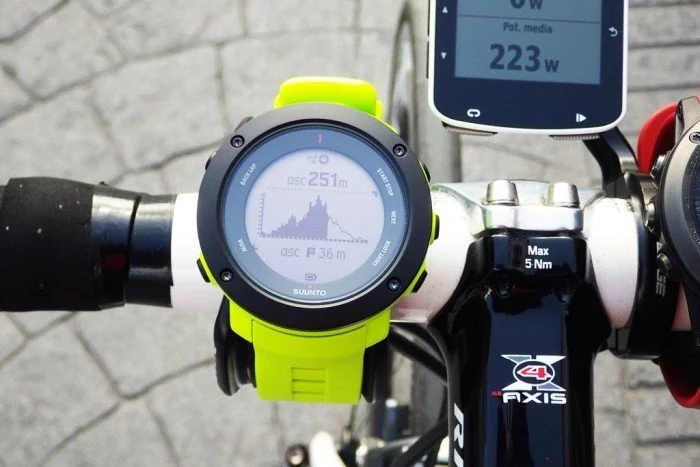
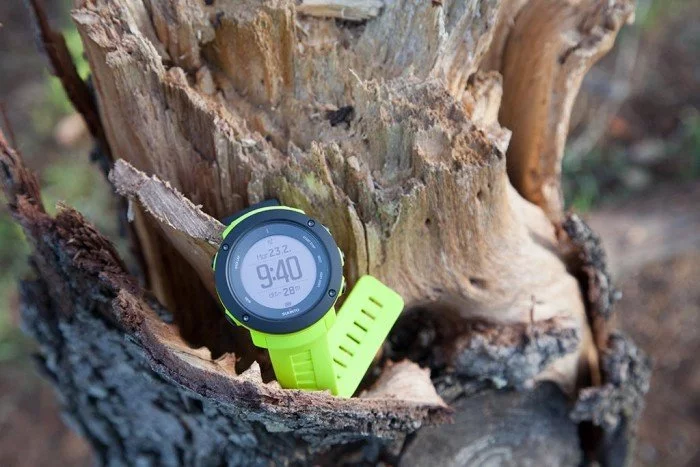
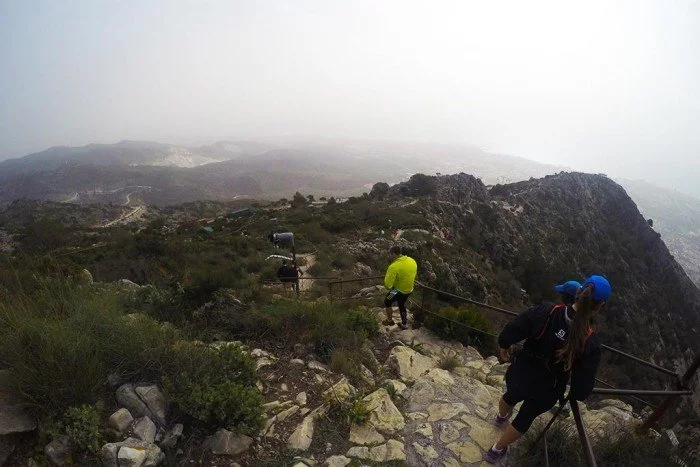
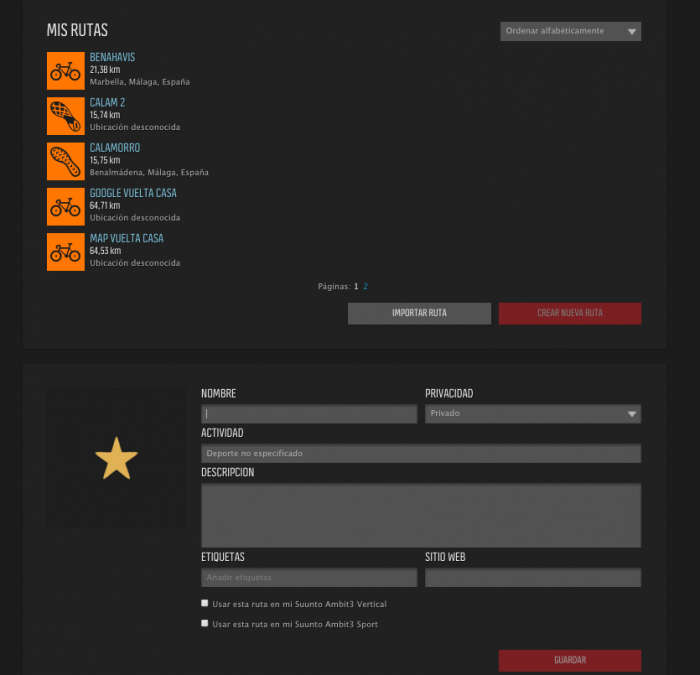
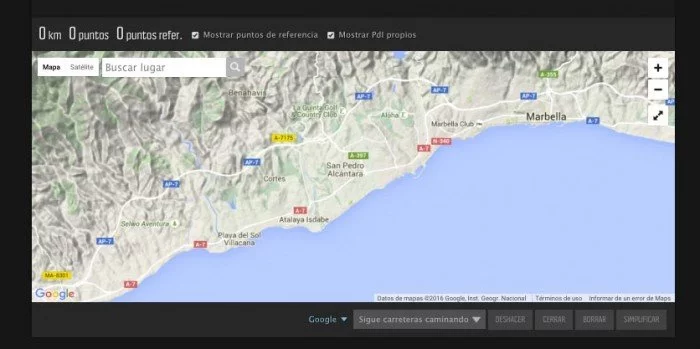
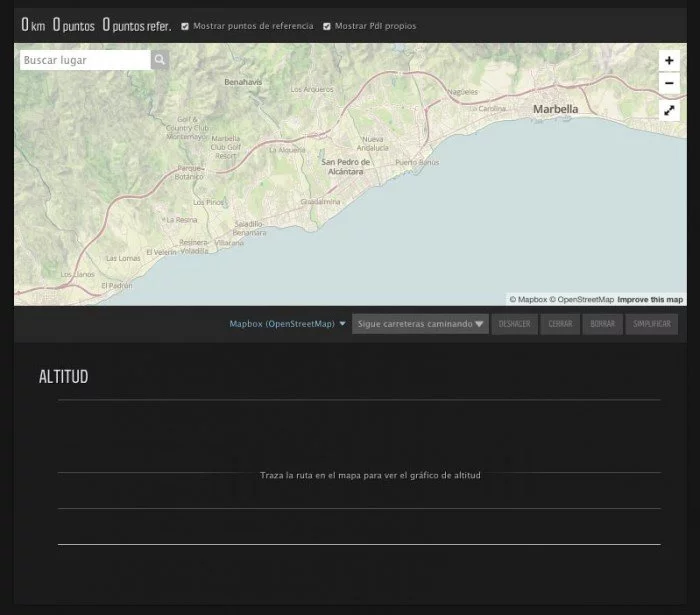
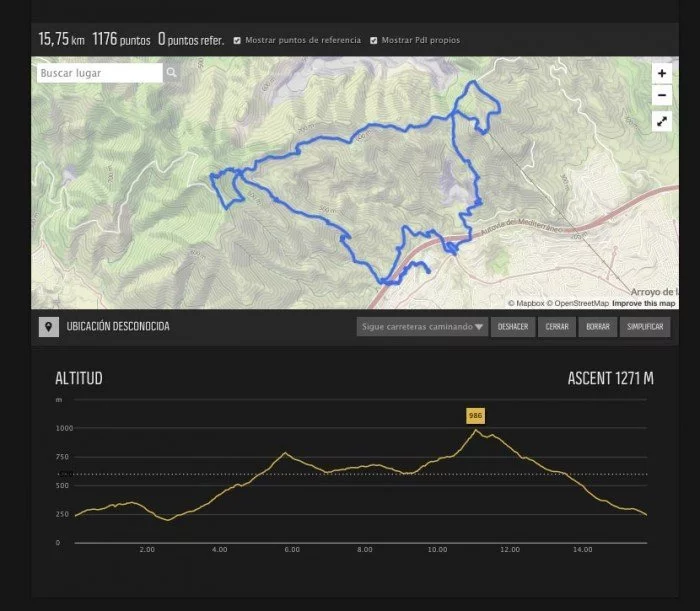
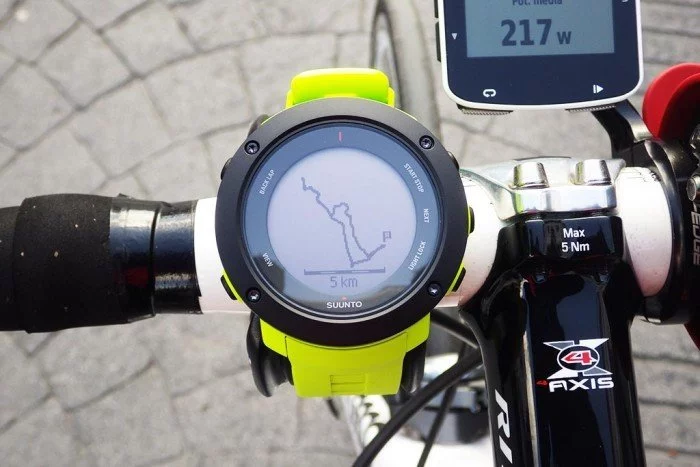
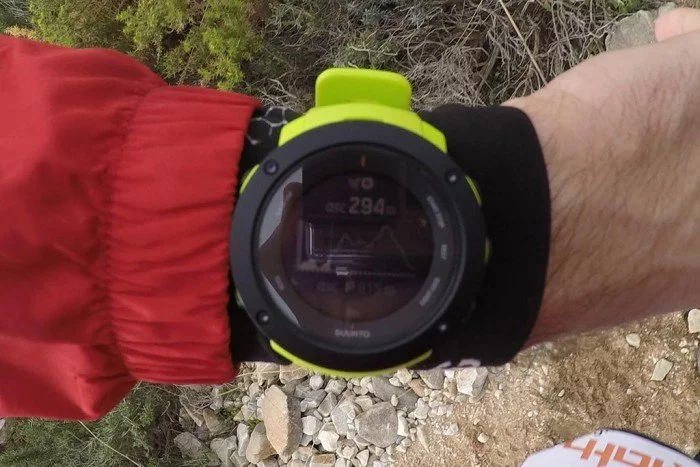
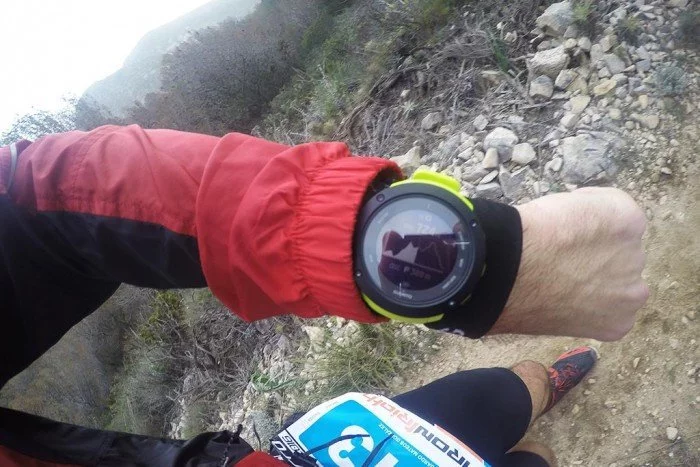
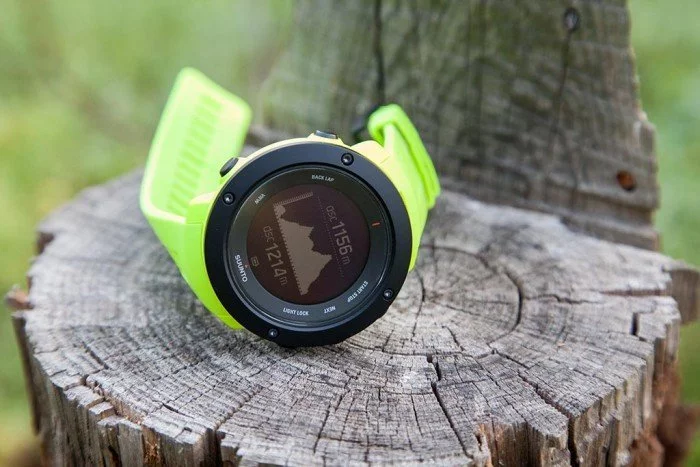
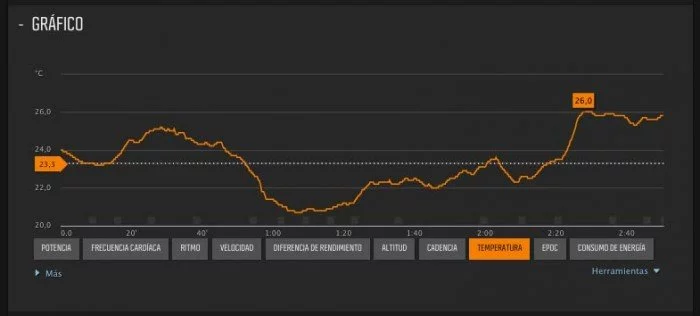
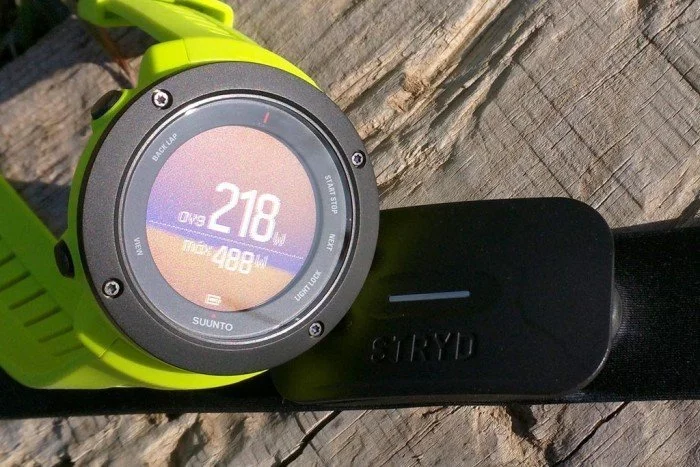
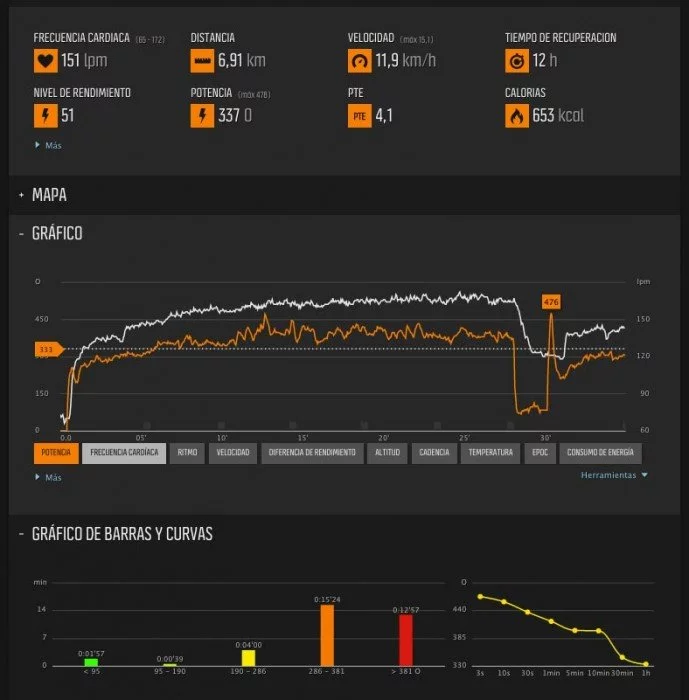

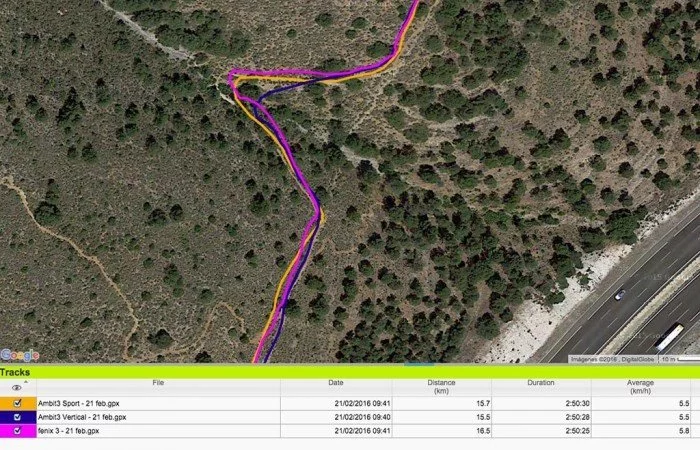
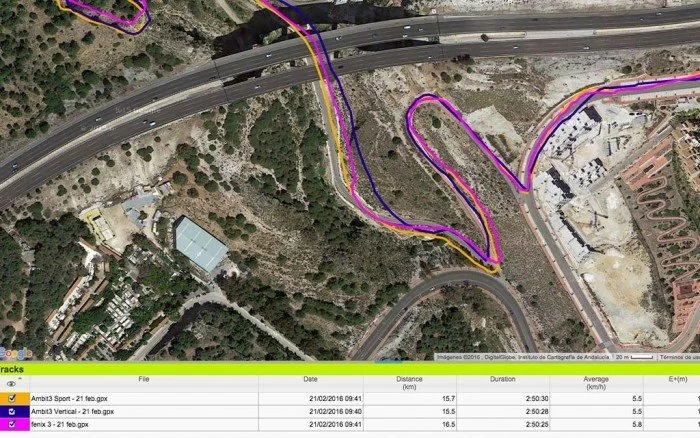
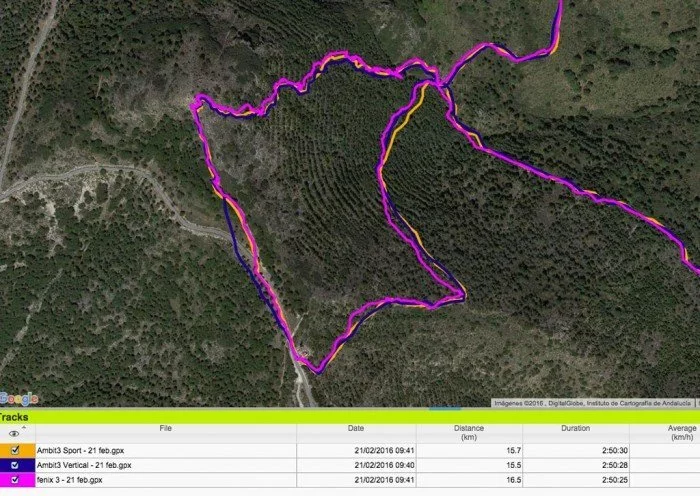
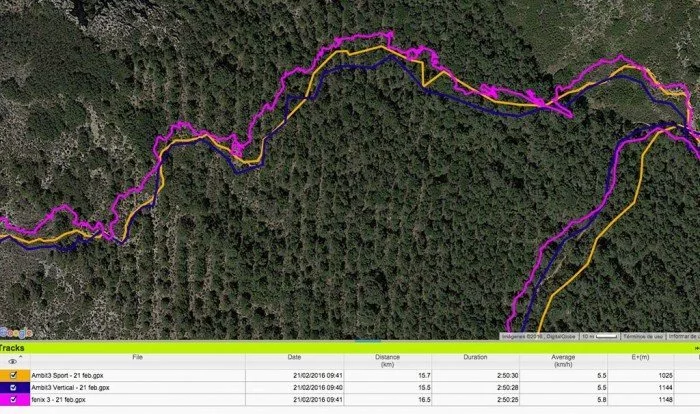
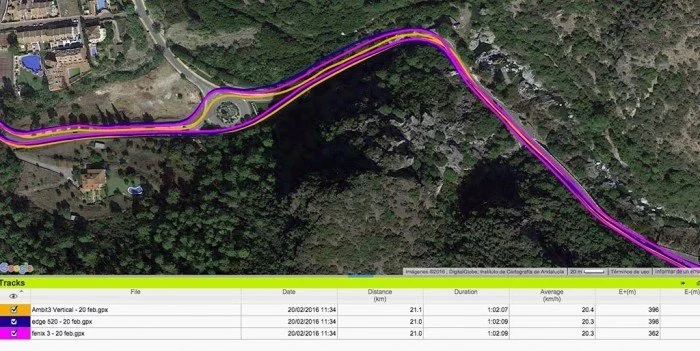
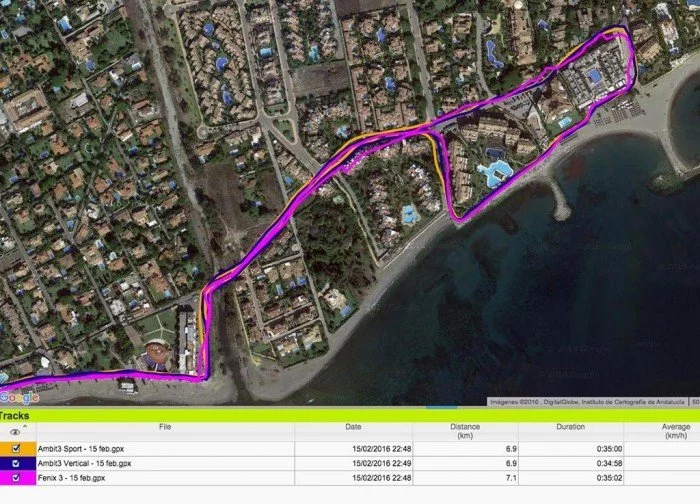
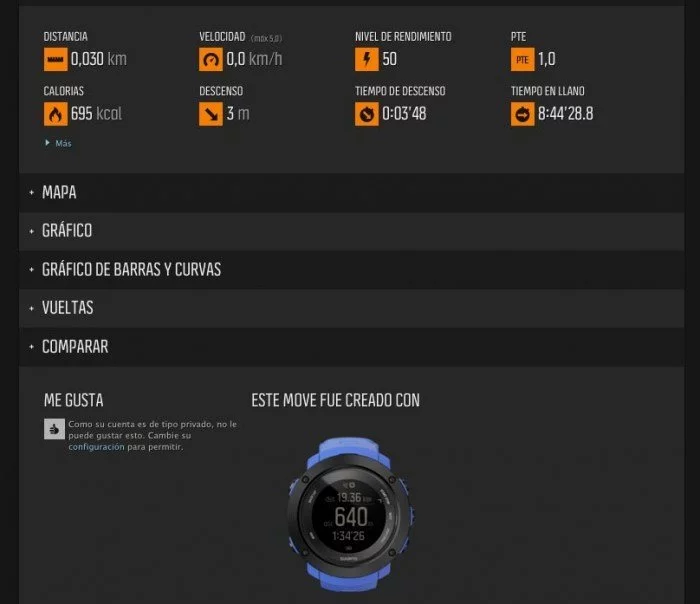
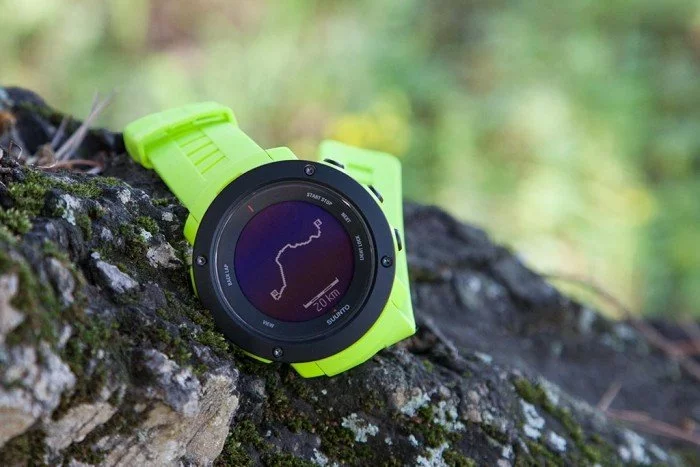
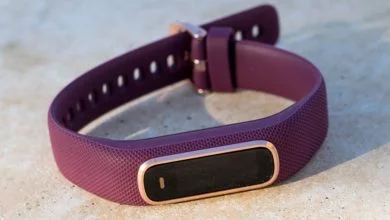
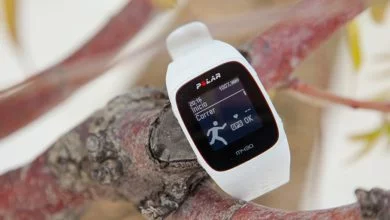
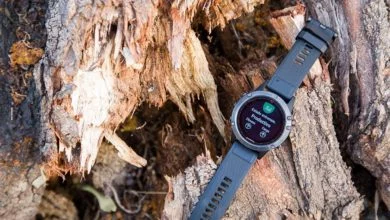

Buen analisis, enhorabuena !!!
Una pregunta, soy poseedor de un Ambit2. Hasta la fecha las actividades en piscina no son sincronizables con Strava. ¿Se ha corregido con este modelo ya? igual viene corregido hace tiempo con la serie 3 o peak, pero lo desconozco.
Saludos
Gracias Xavi
No es algo que tenga que ver con el modelo de reloj utilizado, sino que depende de la sincronización entre Movescount y Strava.
Hola, muchas gracias por esta fantástica página y por el esfuerzo en mantenerla. . Estoy preparándome para mi primera maratón en Valencia en noviembre y, por otro lado, soy montañero y ando por pirineo siempre que puedo. Originalmente quería comprarme un garmin etrex 30X para el monte y un reloj para correr, ¿sigo con ese plan de 2 cosas o merece la pena comprar el vertical y tener todo en uno?, ¿qué te parece?
Muchas gracias.
Ahí no te voy a poder ayudar. Mis escapadas por montaña se limitan a rutas simples y fáciles que con la navegación punto a punto de un reloj puedo solucionar perfectamente. A un dispositivo como el Etrex jamás le podría sacar provecho, así que depende más de cuánto te «pierdas» cuando vas a la montaña.
Ok, muchas gracias. La verdad es que quería un gps para montaña porque suelo ir solo y me gustaría ir con algo más de seguridad, es decir, con idea de meter una ruta y seguirla.
Por otro lado, tengo un móvil con android, ¿esto es un handicap como para no comprar el ambit 3?, ¿funciona tan mal con android como para pensar en otro modelo?
Gracias.
Iñaki
No, es un handicap, simplemente que podría funcionar (mucho) mejor. En principio Suunto está reescribiendo la aplicación desde cero para mejorar la funcionalidad, pero sin ningún tipo de fecha estimada.
Muchas gracias. Y enhorabuena de nuevo por el blog y los análisis.
Hola Eduardo!
Gracias por este grandísimo artículo. Me preocupa un aspecto del Ambit3 Vertical, que es cómo va a soportar el bisel un uso diario. No es redondeado como el Sport, sino que tiene unos bordes muy marcados. ¿Consideras que perderá color con facilidad como hemos visto hasta ahora en otro modelos, incluido el Peak?
Gracias y un saludo!
El bisel es de acero. En ese sentido es resistente, pero evidentemente si se «frota» con las paredes o similar, se va a ver afectado el bisel. Pero es el mismo material del Peak.
Duda, entre el garmin fenix 3 y el suunto vertical, ¡por cuál te decantarías?
Elijas el que elijas, no te vas a equivocar. Uso ambos de forma frecuente y los dos dan buen resultado. Si prefieres la simplicidad, el Suunto es más simple. Si quieres tener todas y cada una de las prestaciones habidas y por haber, sin duda el Fenix 3 es el que más ofrece.
Una duda, entre el garmin fenix 3 y este suunto vertical, ¿por cuál te decantarías?
Gracias y enhorabuena por el blog
Perdón, que he vuelto a enviar la pregunta.
Interesante la opción de ver la elevación durante la ruta (gráfico). Debería estar disponible también en el 3 peak. ¿ Sabéis si hay alguna intención por parte de suunto de actualizar soft para ofrecerla?
No, Suunto no ha dicho nada al respecto, lo que hace indicar que se quedará sólo como una opción exclusiva del Vertical.
Hola,
Entre el Traverse y este Ambit3 Vertical, por lo que a la navegación GPS, ¿hay diferencias?. Viendo las características de un modelo y otro, no me queda claro si, por ejemplo, navegando con un track marcado, la línea discontinua que marca el Traverse para aproximación o desviación de éste, lo tiene también el Vertical.
Gracias!
La navegación que ofrecen es la misma. El Traverse está más orientado a las rutas de montaña, y el Vertical a carreras, trail y duatlón o triatlón
Hola, me gustaría saber cómo de potente es el vibrador del reloj… ¿suficiente para despertarte cuando funciona como alarma? un compañero me comento que el fenix3 era muy suave la vibración.
La vibración es suave. El poder despertarte con ella dependerá principalmente de lo pesado que sea tu sueño. Pero tal vez sea algo aventurado depender sólo de la vibración en la muñeca.
Esperaré entonces a probarlo antes de comprarlo, ya que ahora tengo el pebble y la vibración para alertas/alarmas es realmente espectacular, casi como el vibrador de un móvil.
Gracias por la respuesta y por la review. Muy útil 🙂
Run, sport, peak o vertical?
No sé por cual decidirme. Te pasó los precios que consigo en este momento en Usa. Run 200, sport 230, peak y vertical 320 dólares cada uno.
Yo solo corro y mi idea es usar el reloj también en la vida diaria, primero pensé en el Run, pero vi que comentas que él sport tiene mejores terminaciones, y la diferencia es poca, pero luego veo que por 90 dólares más tengo el Peak, en donde la batería dura el doble y tiene algunas cosas más.
Por último veo que vertical, es él último que salió y ya viene con vibración de alertas, es el modelo nuevo de suunto, con la antena en el borde y comparándolo con el peak, le veo la contra que la batería dura la mitad.
Ayuda!!!!!!!!!
Al final depende de cómo valores cada una de las diferencias, que tienes bastante claro dónde están. El Ambit3 Run ni siquiera lo valoraría, por la diferencia de precio el Sport es mejor opción. Peak o Vertical? ya tienes que ser tú quien valore si te merece la pena pagar más por mayor autonomía, altímetro o vibración…
Si sólo vas a hacer asfalto, con el Sport estarás más que satisfecho.
Muchas gracias
Hola!! Soy nadador de aguas abiertas, suelo hacer distancias largas y maratón, en una de mis últimas travesías el ambit 2S se me paro a las 6 horas 30 min(en lugar de 8 horas), por lo que estoy mirando uno nuevo, en tu análisis no veo que lo hayas probado en mar, aunque se en pequeña distancia, si lo has probado ¿me podrías decir que tal va?, he visto otros como el tom tom multisport(malisimo en aguas abiertas) y el fenix 3(también deja bastante que desear)
En el momento de la prueba no hice natación en aguas abiertas (fue en febrero, poco apetecible…), y no ha coincidido que haya realizado ninguna prueba en aguas abiertas con él. Está próxima la publicación de la prueba del 735XT, ahí hay una prueba con otro Suunto (Ambit3 Sport) junto con otro par de relojes, échale un vistazo a la sección de aguas abiertas cuando se publique que podrás ver trazadas y distancias. Y a ver si puedo incluir alguna prueba en aguas abiertas para el Vertical.
Estaré atento, ya de paso a ver si sale el suunto spartan, haber que tal funciona
ATENCIÓN
Lo tenéis de oferta en Wiggle. Puedes pinchar aquí para acceder a la oferta.
Hola,
En primer lugar enhorabuena por el análisis que nos sirve de tanto a muchos.
Mi duda es si hay alguna manera de que el ritmo no aparezca en valores de 5 en 5 segundos. Es decir, siempre me aparece por ejemplo 4:15/km, 4:20/km, 4:25/km… y nunca valores intermedios (4:13/km, 4:22/km, 4:28/km…). Siempre valores de 5 en 5.
Y un comentario es que hace 3 semanas que adquirí el Ambit 3 Vertical. Al meter una ruta y un Punto de Interés (PDI), me dio problemas tanto con la sincronización con moveslink en el ordenador como en la propia aplicación del móvil. No se pueden pasar los moves ni ningún dato de ninguna de las maneras. Desde Suunto me van ya dando largas desde hace 2 semanas que se solucionará, pero nada de nada. Voy a esperar una semana más y si no me tocará devolverlo.
Simplemente por si a alguien más le pasaba.
Saludos y gracias.
Arcadio Margarit
http://www.amtraining.es
El ritmo instantáneo es siempre en múltiplos de 5. Pero si seleccionas el ritmo medio en vuelta, ese sí va al segundo.
Pero es fiable elritmo de vuelta? Yo vengo de un polar m400 y el ritmo iba al segundo y me he acostumbrado, al comprarme el vertical y ver que va de 5 en 5 meveo raro, aunque supongo que es mas fiable por el sistema de medición de suunto, el fusespeed, creo.
Sí, precisamente se hace por dar algo más de solidez al dato y evitar que haya saltos en el ritmo. Pero es el ritmo instantáneo el que va en múltiplos de 5, no el ritmo por vuelta.
Gracias!…supongo que por esto se alaba la fiabilidad de Suunto en la medición del ritmo…ya decia yo qoe con el M400 iba muy rápido..je je.
Un saludo.
Hola!
Tengo una duda, es posible borrar los movie de el reloj de algún modo? Es que los tengo borrados en movescount pero sincronizo y siguen en el diario del reloj. No sé cómo borrarlos…
Gracias
No, no es posible borrarlo desde el reloj
Pero entonces no es posible borrar los track del reloj desde ningún sitio?
Individualmente no. Puedes forzar una actualización y borrar el reloj por completo para después volver a sincronizarlo. Pero no es necesario.
En cuanto a esos moves que aparecen en el archivo, la memoria es circular.
Cuando el reloj lo necesite simplemente sobreescribirá ese «archivo» por uno más actual. Es decir, no ocupa espacio ni hay que preocuparse por el, simplemente está ahí hasta que un buen día deje de estarlo.
Hola.quisiera saber que tal es el zoom a la hora de seguir una ruta ya que utilizo gafas para ver de cerca y no las llevo cuando salgo a correr por el monte, con el zoom del movil me voy apañando, pero es un coñazo llevarlo en la mano de ahi mi interes por el vertical aunque tambien valoro el fenix 3. Gracias. Un saludo
En la prueba del Ambit3 Sport puedes ver más detalles acerca de la navegación y de los modos de zoom que permite.
Gracias!. Ahora que llego de trabajar me lo miro.
Un saludo.
hola Eduardo , gracias y felicidades por esta pagina , mucha informacion y bastante simple de entender .
yo acabo de adquirir un Ambit3 Vertical y creo por todo lo que he leido sobre todo aqui que no me he equivocado .
ahora mismo que lo unico que e echo a sido encenderlo te pregunto …
me instalo Movescount en el ordenador y strava en el movil ?
estas obligado a hacer cosas con los dos ? y para que usar una y la otra ?
a mi lo que mas me interesa ya que hago mucho trail es eso de meter tracks y también saber usar lo de la vuelta a casa , es mi primer pulsometro de estas características y no tengo ni idea .
gracias y enhorabuena
En el ordenador debes instalar Moveslink, para poder sincronizar el reloj.
Strava no es necesario de ningún modo, sólo si quieres compartir carreras y entrenamientos con amigos.
Hola Eduardo!
Cundo usamos el reloj en modo natación, los avisos por vibración los podemos programar para que vibre en distintas series.
Muchas gracias y un saludo.
No, no es posible
Hola Eduardo
Primero agradecerte tus aportaciones para todos los que nos gusta el deporte.
Y segundo, quería ver si me puedes aconsejar. Ando dudando entre los siguientes relojes: Suunto Ambit 3 Peak, Ambit 3 Vertical, Garmin Fenix 3 y Fenix 3 HR (pulsómetro integrado). Suelo correr, nadar, ciclismo y marchas largas por el monte de 1 a varios días (a veces pienso que el día debería de tener más horas). Me gusta la pantalla del Ambit 3 Vertical en la que se ve el perfil de la marcha y te pone lo que llevas recorrido y lo que te falta. Por lo que te he leído parece ser que Garmin también lo ha metido a los Fenix, no así, Suunto al resto de relojes (algo que me parece absurdo).
Lo que más me tira del Peak es la batería que tiene. Creo que es el que más tiene de los que te menciono y no quiero quedarme sin batería en una marcha por Pirineos o por cualquier otro sitio, en las que a veces duermo al raso y sin posibilidad de cargar el reloj. Suelo llevar una batería externa por el tema del móvil, ya que es a lo que más prioridad le doy.
El tema del pulsómetro, es que quiero empezar a monitorizarme, que los años empiezan a notarse para todos. Si no es con pulsómetro integrado, llevaría banda pectoral.
Por lo demás, un saludo desde Donostia
La pantalla del perfil de ruta ya está presente en otros modelos de Suunto desde que se realizó esta prueba. De la gama Ambit3, se encuentra también en el Peak, y lógicamente en los Spartan también.
Debes tener en cuenta que el sensor óptico también tiene consumo de batería, al menos en el Fenix 3. Los nuevos modelos no se nota tanto en la autonomía, pero el Fenix 3 HR lo ve más reducida.
En tu caso, elegiría entre el Fenix 3 y el Ambit3 Peak, por el que te sientas más cómodo.
Muchas gracias Eduardo por la aclaración.
Vaya lío…
Yo sólo corro (50/50 Asfalto Trail hasta maratón), y consigo el Run a 104, Sport 140, Vertical 282 y Peak 235… En teoría si reponen stock en wiggle el Vertical en otro color a 209,45.
Imposible decidirme. Por una parte sé que el Sport no me va a aportar nada que vaya a utilizar más que el Run, por otra que el Vertical sí mola lo de la vibración y la gráfica de altimetría pero flojea un poco en la lectura GPS que quizá sea a lo más importancia que le doy (soy de los obsesivos que cuando en un 10k homologado el reloj me marca 9,8 estoy tres días mosca), luego el Peak, que es el tope gama y aunque no tiene la gráfica de altimetría si tiene el barómetro, más autonomía etc..
Hasta ahora estoy con un M400 y contento aunque se me ha fastidiado, por lo que en el fondo creo que el RUN me aportaría todo lo que necesito y que obtener las pijadas del Vertical me sale casi por el triple y tener el Altímetro en el Peak por algo más del doble..
¿compra eficiente y suficiente el RUN? ¿Compra inteligente y previsora el SPORT o el PEAK? o ¿compra seductora y atrayente el VERTICAL?
Difícil elección…
El Peak ya soporta la gráfica de altimetría. De los que expones sería mi elección si la duración de batería fuese un factor determinante.
En caso de no serlo… echa un ojo al nuevo Suunto Spartan Trainer.
Publicaré la prueba completa esta semana.
hola, estoy por comprar el suunto ambit 3 vertical, pero me gustaría saber, antes de comprarlo, si es posible planificar entrenamientos por intervalos/series en función de la frecuencia cardíaca y/o del ritmo de carrera y si tiene avisos por vibración para este tipo de intervalos
tenia pensado comprar el suunto spartan trainer, pero creo que lo descarto por completo ya que he leido que solo se pueden planificar intervalos por distancias, un saludo y gracias por la ayuda
Si, ese tipo de entrenamientos está disponible en los Ambit3. En la prueba del Sport tienes todos los detalles referentes a la configuración de estos entrenamientos: https://www.correrunamaraton.com/suunto-ambit3-sport/
El Vertical lo tienes ahora a muy buen precio por la semana de Black Friday
ok muchas gracias por la info. ya tenía echado el ojo a esa oferta, aunque dudo de su veracidad por dos motivos, uno, la foto no corresponde con modelo vertical pues se ve la antena externa y no en el bisel, y dos, en la descripción del producto en el apartado múltiple sport options se refieren al peak y no al vertical…
de igual manera creo que es muy buen precio por el peak aún sin pulsometro
Enviado desde mi Huawei
Buenas he visto a buen precio el ambit 3 vertical y tenia unas dudas a fecha de hoy
Se ha corregido el error de sincornizar con el movil android?
Y otras seria la bateria, he leido que en grabaciones a 5 segundos dura unas 15 horas. Este año quiero hacer la prueba de el soplao en bici y me da miedo quedarme sin bateria. Es factible ponerlo a grabar cada 5 segundos??.
TEngo una duda respecto al consumo de batería.
Quisiera hacer el soplao este año siguiendo el track para ver altimetría. en este caso, cuando duraria la bateria??. si le pongo cada 5 segundos grabando y siguiendo el track me durara las 15 horas??
Pues dependerá del desgaste que ya tengas acumulado en la batería. Si vas a tardar 15 horas lo cierto es que vas a ir bastante justo.
Muy buen review! Para seguir Rutas en Mtb, és útil ? O me aconsejas otro modelo?
Es perfectamente válido
Buenas! El vertical me está midiendo mal con errores de 2 a 4 kms de más en carreras por montaña,teniendo lectura cada segundo. Pero se pierde y hace una recta en algunos tramos, se puede hacer algo para solucionarlo?? Saludos
No se puede hacer nada. Si hay mala cobertura por la zona en la que te encuentras o muchos árboles la recepción es complicada…
hola, este reloj suunto ambit3 vertical sirve para realizar buceos?
No, no es un reloj enfocado a buceo